Kind regards to the #HiveGarden community, especially @riverflows @minismallholding, today I will continue to explain everything related to the cultivation of onions by transplant, for today I will talk about transplanting, preparing the land and the furrows for gravity irrigation . Remember that in the first part, I told you that the onion crop is generally sown by transplantation, which means that we must first make the seedlings to produce the seedlings, and precisely, in the content of the first part, I talked to you about the subject: How to make the seedbeds, See Part-1 I hope who have read this first topic. This second topic is very interesting, here I will talk about transplantation, which is one of my favorite moments when growing onions.
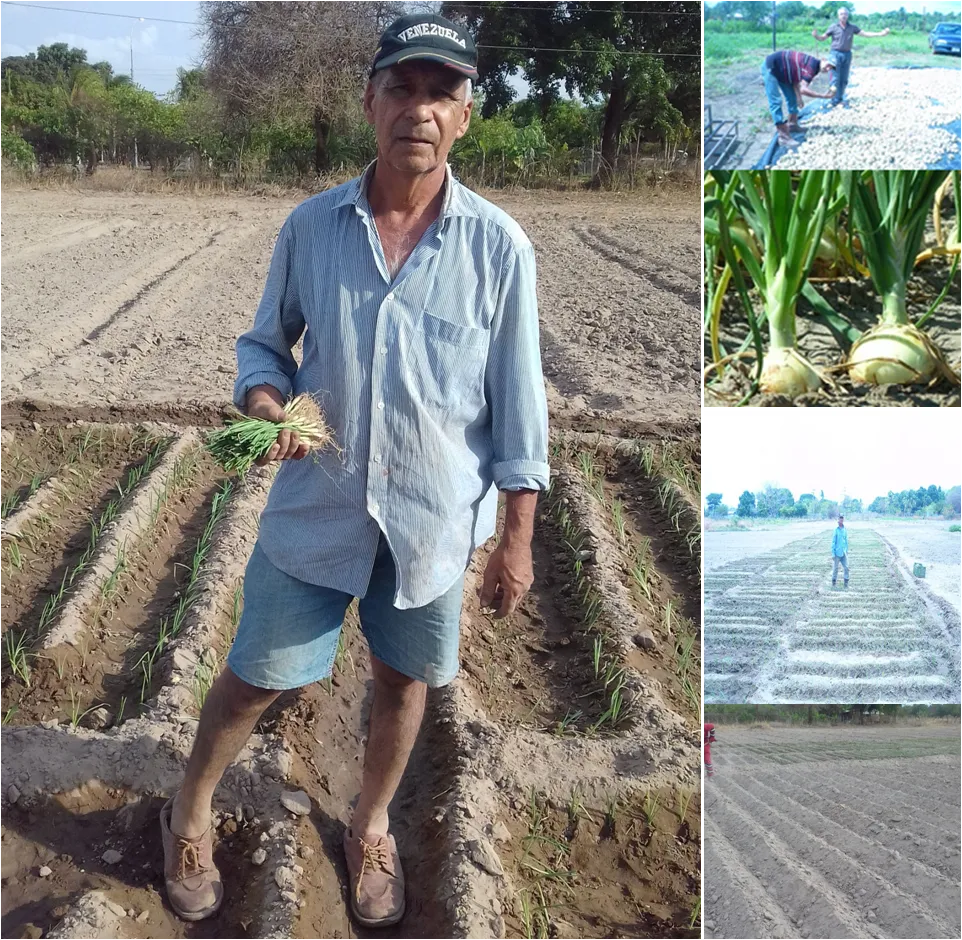
Cultivation of onions by transplantation, Part-2: Onion transplantation, preparation of ridges and furrows of risks due to gravity
In the first part I told you that the seedlings suitable for transplantation are those that have reached a height between 12 and 15 cm, in addition to this, the thickness of their stem is 8 millimeters, like the thickness of a pencil.
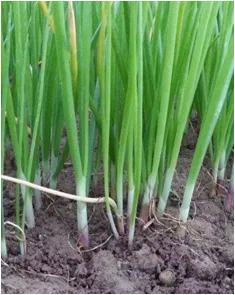
Before starting the transplant, it is necessary to have the ground prepared, we must prepare the ridges and irrigation furrows, which will be by gravity, so I will explain each of these tasks below.
Land preparation: ridges and irrigation furrows
The plow of the land:
The preparation of the land consists of plowing the land with the use of an agricultural tractor, in this case I mean the cultivation of onion on a large scale or open field, the plowing must be done with two or three passes of harrow, until the land it is well loose, light.
Here I am monitoring the plow:
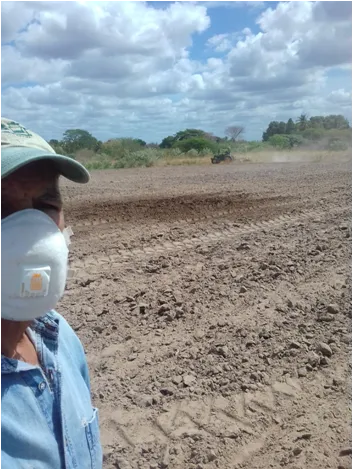
After plowing the land, the next step will be to furrow the earth, this work is carried out with a furrower that is attached to the agricultural tractor. But we can also do it by hand. Generally the furrows and ridges of my crops, I do them by hand, because the irrigation system I use is the fork type, with 4 to 5 short furrows of 2.5 meters long, a model of furrows that I have designed for my onions, this type desurcos I call it that, because it looks like a table fork, I like this type of grooves because that way the slope of the terrain is better controlled and the water flows slowly, which is what we want, see images:
First I make the linear groove in parallel and then I do the divisions every 2.5 meters:

- The ridges will have the width of 30 centimeters as well as the irrigation furrow:
Preparation of seedlings for transplantation:
Before starting to extract the seedlings from the seedbed, we must wet the soil well to prevent the stems from breaking when trying to pull them off, as is often the case when the soil is dry. Next I will show you the steps of the transplant.
- Before starting the transplant, we must wet the furrows, using the gravity irrigation system, which consists of moving the water through the main ditch or furrow, the water is generally obtained from a pond or directly from a water well:
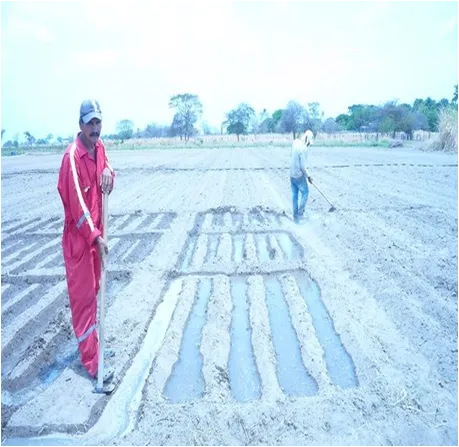
- We can now start the transplant, but first we cut a third of the leaves of the seedlings, trying not to cut the new leaves:
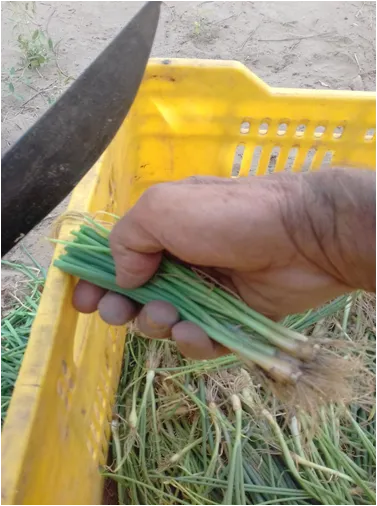
The next step will be, wet the roots with a fungicide solution, I use mancozobet powder:
The seedlings are sown in rows at a distance of 10 cm between seedlings, on both sides of the ridge. The plants are planted in the line that the water leaves in the furrow, this mark indicates that this level will always be wet. Many times it happens that the plants are planted high above the ridge and the water cannot wet them and they remain small:
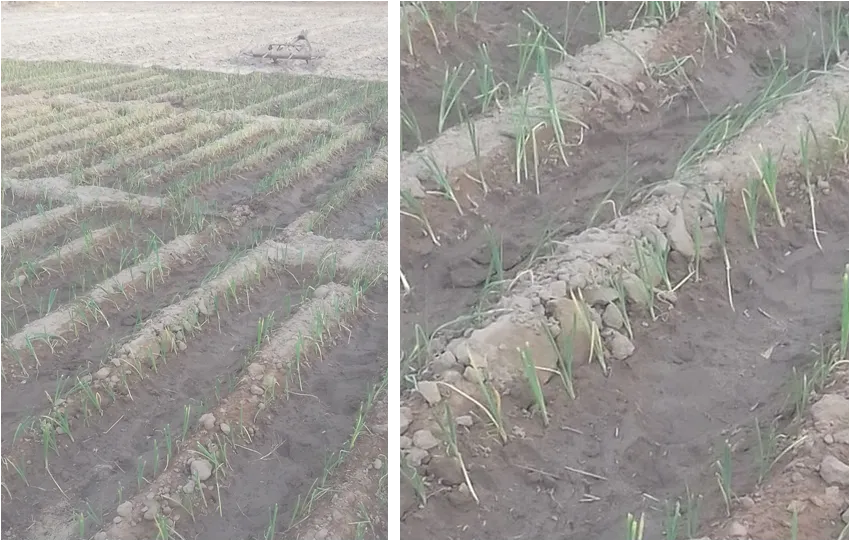
The plants are sown, opening small holes, at a depth of 3 centimeters, it is important not to bury the stems too much, because the bulbs are deformed:
I recommend that when you are sowing, do not collect many plants, so as not to spoil them:
Here you can see me planting my onions, the truth is that transplanting is what I like the most about growing and of course harvesting much more:
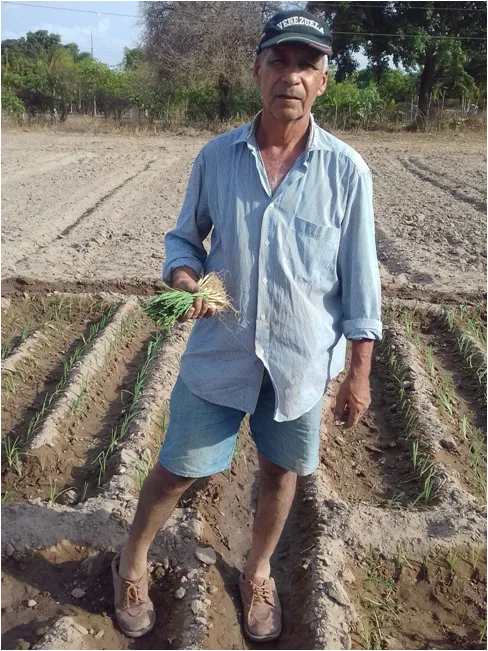
The plot that you see in the following image has measures of 8 meters wide by 45 long, there I managed to plant 24,000 plants and each plant will be an onion, for an average of 1800 kilos:
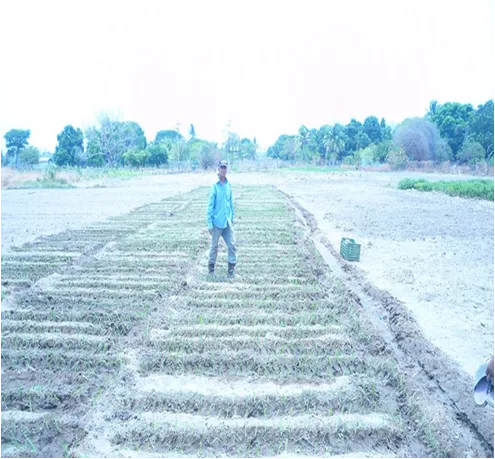
Well friends, see you in the next part of this interesting crop, for the third and last part, I will talk about fertilization, diseases and harvest, which is what every farmer expects to see from his crops. Greetings.